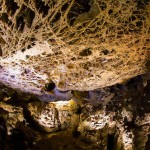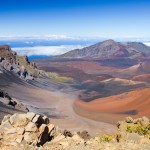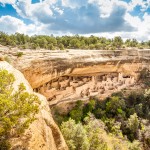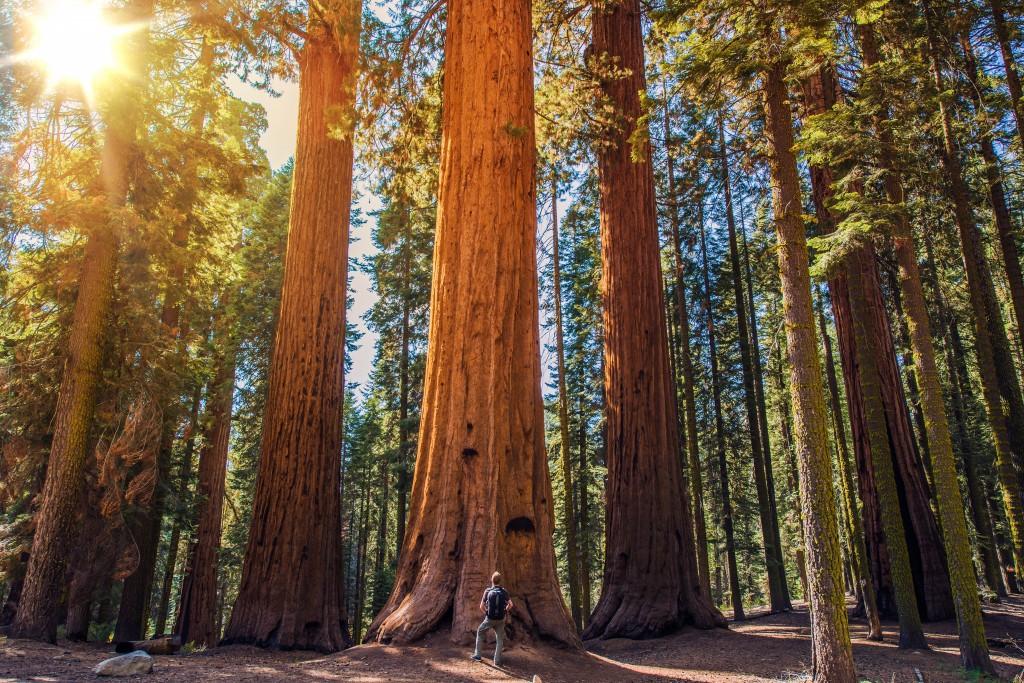Glacier National Park- A World Class Nature Reserve
Right on the US-Canada border and entirely in the state of Montana, Glacier National Park is monumentally important thanks to some fascinating geological formations. At over 1 million acres of land, it is amongst the country’s largest National Parks (1). It has two mountain ranges, over 130 lakes and one of the most diverse ecosystems of the continent. The landscape has been calculated at 170 million years old, particularly the mountain ranges, which formed during a much earlier ice age.
President William Howard Taft signed Glacier National Park into law in 1910; soon afterwards, a number of hotels and a transport network were built to encourage tourism to the area. Today, the lodges and transportation throughout the park (mostly built by the Great Northern Railway) (2) are an important cultural treasure as much a part of the park as the mountains and glaciers for which it is famous. The tagline is “The Crown of the Continent” which perhaps gives visitors a sense of the importance of Glacier National Park. It has a dedicated internationally important research center that not only allows geologists, biologist, climatologists and others to carry out important research, but also provides education and knowledge services for public outreach and policy decision-making in Montana and Federally (3).
History of Glacier National Park
Evidence suggests that Native Americans occupied the area as early as 10,000BC – approximately at the end of the retreat of the glaciers (4). As plants and animals moved into the area, there would have been reason for human settlers to move in also. As we move forward in time, evidence of human occupation becomes increasingly clear, with the highest concentration beginning around 4000BC (5, p4).
When European settlers arrived, several Native American tribes were living in the area – amongst them the Blackfeet Indians (who were in the prairies to the east), and the Salish and Kootenai Indians who lived in the west but were both known to traverse the mountains to reach the rich buffalo hunting grounds of the other side (4). Through the course of the 19th century, what would eventually become the park area was rich pickings for hunters of buffalo and beaver, and an important mining site for budding industrialists. It was during this time that the Great North Railway moved in and allowed homesteaders to move into what was the newest state – Montana (those areas that were already occupied had previously been part of Oregon Territory).
It wasn’t long after this that the new settlers began to see the scenic beauty as nationally important and with so many National Parks having already been created in the previous four decades, a movement began to press government to limit industrial mining and hunting, and to protect the landscape. This wasn’t just born out of a concern for the virgin land, but also the growing belief that there was a need to respect nature – the environmental movement is much older than many people believe – it began at the end of the industrial revolution.
It was largely down to one man that Glacier National Park was created. George Bird Grinnell was an osteologist by trade and during fossil collecting missions in the newly created western states, became concerned with the plight of some of the tribes who lived there – particularly in Montana (6). He visited what would become Glacier National Park in 1885 and was pivotal to the success of the land protection, and that of the Native Americans who lived within it.
Shortly after the signing of the park into law, several civil engineering projects began, including roads such as the Going To The Sun Road which is one of several protected civil engineering projects within or crossing the park (7). Glacier National Park is a testament to many phases of the USA’s history – its prehistory, its industrial past and the road to conservation. Today, it is an important monument for tourism and for science researchers; hikers, nature lovers and researchers alike cherish the important natural landscape and scientific resources.
The Flora of Glacier National Park
It is a remarkable feat that the native plants you see in Glacier National Park today were all present when European settlers first arrived in the area. That means it is one of the few places in the US that could be considered the closest thing we have to a pristine landscape (1). This makes it an important fieldwork destination and research center for botanists, dendrologists and other plant specialists from around the US and the world.
It is home to over 1100 recorded species of plant – 20 types of tree, 90+ wood shrubs and vines, 88 annual plants and over 800 types of perennial herb (8). Efforts to record and control invasive species have so far recorded 127 non-natives which are carefully managed by the NPS. Much of the landscape is what geologists call “post glacial”. This means that climate is often harsh and cold, typically seen in areas where glaciers have retreated, but retain many elements of that landscape. Weather fronts coming from the north and the east create a varying climate, meaning there is a mix of drier ecologies in the northern areas to the more temperate areas of the west. The Continental Divide also creates pockets where there is considerably higher-than-average precipitation. Though rain levels do not vary a great deal across the 1 million acres, it is the wind and other conditions that ecology and makeup of plant life (9). Aspen trees sit within the valley below whereas on the higher levels, cedar and hemlock sit on the windy, dry western edges while lusher, more continental open forest, may be found in the east (8). Wildflowers are all over the park and they too vary depending on elevation, precipitation and makeup of the ground soil – some are particularly delicate and found only with Glacier National Park due to its unique geology (10).
Flora Conservation Issues
Though Glacier National Park is a near pristine landscape, it is not without its problems. There are many threatened species within the park (9). Of most concern, and perhaps a species that will be Federally listed as a protected species in future, is the native Slender Moonwort (11). It is a small fern which splits into two broad leaves; we cannot define what its typical habitat is as it has been found across a range of ecosystems throughout the western states – even as far north as Alaska which is a very different ecology from Utah to the south where it is also found. It is not threatened elsewhere, but a matter of ongoing concern for the park. Glacier National Park employees are monitoring the situation.
The native whitebark pine – common across most of the western states – is presently threatened by a disease known as “blister rust” (12). It is vital to upland ecosystems and over the last 100 years, has killed approximately 50% of the native tree population. It is not known how or when it was brought into the continental United States, but likely came in on infected seeds from overseas. This is not the only threat facing the whitebark pine – climate change is having an immense effect on their numbers, particularly in encouraging mountain pine beetles, which are finding the warmer, drier conditions much more conducive to their species.
Due to the changing nature of the climate and the continued retreat of glaciers in the park, also at threat is the water howellia. This winter aquatic plant is listed Federally, and now protected wherever it is found (13). Many states where it is present, and particularly in the National Parks of the west, there is a considerable effort to preserve and encourage its continued existence. As climate change takes hold, this is expected to be considerably more difficult.
The Fauna of Glacier National Park
Glacier National Park is home to animal life that is just as diverse as the plant life – once again because of the varied topography and elevation of the 1 million acres of the park. There are 65 species of mammal including Canadian lynx and grizzly bears – both of which are presently listed as threatened (14).
Birds are a peculiarity of the park; some 260 species have already been counted and is particularly noteworthy because it is unusual to find quite so many in such a small area so far north – this we can put down to the unique and diverse topography (15). The range is represented too – at the park you will find aquatic, wetland (lake and river dwellers) and dryland species. This variation also accounts for the vast numbers of amphibians and reptiles, many of which live in the drier areas of the park. Typically too numerous to count in any one ecosystem, Glacier National Park is just as rich for insect species. In the summer, you are more likely to find native insects in the uplands as the prairie lowlands simply get too hot. Yet even ancient dried up riverbeds are a hot spot for insects; in a recent examination, some 80 new species were found in such conditions (16).
Fauna Conservation Issues
Presently, four species within Glacier National Park are Federally listed as threatened species: bald eagle, grizzly bear, lynx and bull trout. Separately, the state of Montana has listed some 140 species of plant and animal as being of particular concern so Glacier National Park, for all its diversity, is experiencing similar conservation issues to other parks across the country.
The gray wolf, though numbers have increased in recent years after a campaign to eradicate them from many National Parks in the US, are still listed as endangered (17). Just 2,700 exist in the lower states and many government authorities responsible for wildlife areas have realized just what an impact it has had on fragile ecologies to remove such an important predator species. Illegal killing of wolves is also a known problem as human settlement expands into traditional wolf pack territory. International efforts are now in place to reintroduce them into some areas where they are critical has had mixed success – largely due to legal challenges and illegal poaching. Nevertheless, the impact of loss of wolves in these areas has serious repercussions for winter food availability for the small and medium herbivores and carnivores upon which wolves mostly feed (18). Severe knock-on effects are known throughout most ecosystems with the loss of such an important predator.
Both black bears and grizzlies roughly occupy the same grounds – both are threatened within the park and monitoring populations include tagging, DNA testing and other measures to help promote them as human encroachment and loss of habitat through climate change proceeds (19). National Park Service is also aware of the problems of human garbage left on site. Bears tend to forage for food waste where this is in abundance – as we have seen at Yellowstone and other parks. This too can have a surprising impact on the ecology in that plant growth can get out of control, threatening already problematic population balance (20).
Glacier National Park is founded on the importance of its glaciers. Climate change is already having a profound effect on ice levels, which can and will affect the level of precipitation, water table and consequently the plant and animal ecology. The Western Glacier Stonefly is a rare species found only in the park. A seminal study in 2014 published a full summary of the threat to this important species (21). Due to the loss of water levels, numbers have already dropped considerably. This issue has become so serious, it has been predicted the species will be extinct by 2030.
Building & Historic Infrastructure Conservation
Much of the preserved buildings within the park were built in the first decade of the park; built in traditional Swiss Alpine style, the chalets and lodges are particularly distinctive. In total, over 350 buildings within the park are listed as national monuments (1). During the 1930s, infrastructure was improved including the building of the Going To The Sun Road. It is one of only a few roads in the country to be protected as a National Historic Landmark and a National Civil Engineering Landmark – giving it as much a protected status as the buildings. Though many of these structures are not presently at threat, as they age and become subject to the elements, they may need preservation.
More of a present danger is the increase in brush fires – brought on my climate change – at a National Park that has had less of a problem with the natural process than some others have had. In the summer of 2015, The Reynolds Creek Fire closed off the Going to the Sun Road for several weeks. By early August, it had only partially reopened (23).
Long Term Conservation Challenges of Glacier National Park
Long term, climate change is expected to have a considerable impact on the landscape of Glacier National Park particularly in view of the glacial nature of the ecology. As icecaps and permafrost melts, we are already seeing profound effects on the various ecologies – effects that are expected to get worse (24). Presently, ice melt helps regulate temperature and the water table in the park. 150 glaciers were counted in the park in 1850; today, just 25 remain (25). This loss of glacier ice alone is expected to:
- Increase the impact of the pine beetles spread through the native trees of the park – already a problem for certain types of pine
- Increase the number and intensity of wildfires (such as seen in summer 2015) which will not only alter the landscape, but will also potentially damage protected buildings and civil engineering
- Loss of alpine meadow due to alteration of water table and glacial melt – likely to create a drier landscape
- Which in turn will affect the woodlands at higher elevation if some plant and animal species vacate the area
- Threatened species which are already in danger could become critical or extinct altogether within the park
There are both plant and animal invasive species at Glacier National Park and of particular concern are two types of mussel (26). In 2010, the park took the unusual step of involving the public in recording and combatting the spread of such aquatic life from the west. It has been largely successful in monitoring the source of the arrival of the mussels and NPS staff are working with visitors to ensure that no further invasive species are brought into the park. So long as the program is enforced and visitors with boats observe the rules and work with NPS staff, removal and prevention can be successful.
Sources
(1) http://www.npca.org/parks/glacier-national-park.html
(2) http://www.nps.gov/glac/learn/historyculture/index.htm
(3) http://www.pwrc.usgs.gov/resshow/perry/bios/grinnellgeorge.htm
(4) http://www.nps.gov/glac/planyourvisit/goingtothesunroad.htm
(5) http://www.nps.gov/glac/learn/nature/plants.htm
(6) http://www.nps.gov/glac/learn/nature/environmentalfactors.htm
(7) http://www.nps.gov/glac/learn/nature/wildflowers.htm
(8) http://www.nrdc.org/wildlife/whitebark/
(9) www.nps.gov/glac/learn/nature/animals.htm
(10) http://www.nps.gov/glac/learn/nature/birds.htm
(11) http://www.nps.gov/glac/learn/nature/insects.htm
(12) http://www.fws.gov/midwest/wolf/aboutwolves/biologue.htm
(13) http://www.livescience.com/43818-yosemite-bears-food-stealing-study.html
(14) https://archive.thinkprogress.org/melting-glaciers-threaten-rare-insect-found-only-in-glacier-national-park-169724ccdfd1/











